Energy
444,000 semi-loads of food? Just another day on planet Earth
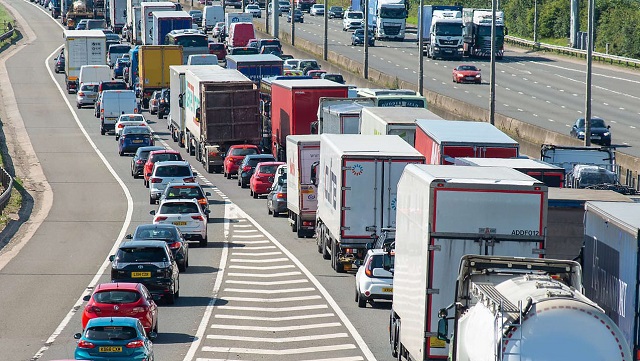
From the Frontier Centre for Public Policy
By Terry Etam
At 100 million b/d, the world consumes a billion barrels of oil every ten days. Eleven billion barrels of recoverable reserves will meet the world’s needs for about 110 days, or just under four months. And global demand continues to grow.
The scope of this discussion goes far beyond oil demand. It is imperative that people understand energy demand, and particularly so on a global scale.
A friend of mine, always with a keen eye on interesting things, passed on an interesting quote from the CERA Week energy conference the other week. The head of the International Energy Forum mentioned a surprising statistic, as quoted by Javier Blas on Twitter: “Heathrow airport in London uses more energy than the whole African nation of Sierra Leone [population ~8.5 million].” Yikes!
Here’s another one that turned up randomly in the feed by a credible source: “If we keep growing our energy usage (2.9% CAGR last 350 years) we will use more energy in the next 25 years than in all prior human history. 3x in 39 years and 9x by the end of the century.”
Energy is an amazing topic, both sources and uses. The sheer scale of what we require for our present lifestyle is mind-blowing when placed in concrete contexts like above. In the abstract, the numbers don’t mean anything. The world consumes over 100 million barrels of oil per day. So what? Is that a lot? Sure it’s a big number but so is 8 billion people. Either stat is hard to wrap one’s head around.
Consider the following with respect to oil consumption/production: ExxonMobil made waves recently for a large oil discovery offshore Guyana, in an era when there aren’t that many discoveries being made (the flip side of the demand for oil/gas companies to return money to shareholders means exploration generally takes a back seat). Reuters picked up the story: ExxonMobil announced a new discovery, one of 30 since 2015, in a 6.6 million acre area that to date has been found to hold 11 billion barrels of recoverable oil, which also equals the country’s total. The results are significant, moving Guyana up to 17th on the world’s petroleum reserve rankings, similar to Norway, Brazil, or Algeria.
Now compare that number to consumption. At 100 million b/d, the world consumes a billion barrels of oil every ten days. Eleven billion barrels of recoverable reserves will meet the world’s needs for about 110 days, or just under four months. And global demand continues to grow.
The scope of this discussion goes far beyond oil demand. It is imperative that people understand energy demand, and particularly so on a global scale.
Look at this history of global energy consumption chart from Our World in Data:

It’s nuts. But it coincides very well with the rising standard of living attained by humanity, particularly in the west, an increase the rest of the world wants to emulate.
Consider the following statistics if you think that trajectory is going to slow down or reverse any time soon.
Africa has about 1.2 billion people, or roughly 15 percent of the earth’s population. Yet Africa accounts for 2 percent of global air traffic. By contrast, Europe has a population of about 740 million, and accounts for 31 percent of global air traffic.
What if Africans decide they want to live like Europeans, air-travel-wise, which is not just justified on moral grounds but actually more functionally logical, because Europe covers only 1/3 of Africa’s size of 30 million square kilometres?
What if the rest of the world wants to enjoy air conditioning to the extent the US does (and why on earth wouldn’t they)? According to the US Energy Information Agency, nearly 90 percent of US households use air conditioning, and virtually every office building does as well. The US has about 130 million households for 330 million people, or about 2.5 people per household. If Africa had a similar ratio, they would have 480,000,000 households, and if a similar proportion had AC there would be 430,000,000 households with AC. It’s safe to say that today in Africa the number of households with AC is far closer to zero than 90 percent. (Even communists/hardcore socialists support near-universal air conditioning, though they call it a ‘right’ by way of that fuzzy but firm ‘gimme that’ appropriation way of theirs.)
Now add in India, with another 1.4 billion people, and do the same math. A billion air conditioners worth of global demand is not a ridiculous estimate, not when considering Pakistan, Bangladesh, Indonesia, parts of South America… in addition to Africa, India…
Consider even food, and the logistical magnum opus required to keep countries food-riot-free. A typical western website says that the average person consumes 3-4 pounds of food per day. Let’s say the rest of the world isn’t so lucky, and we’ll call it 2.5 pounds per day for a global average (each new cruise ship drags the world average up considerably). There are 8 billion of us schlepping around planet earth. A semi trailer can carry about 45,000 pounds of cargo. So every day, the equivalent of about 444,000 semis full of food are forklifted out of trucks and down the gullets of 8 billion upturned mouths. Every freaking day, without a break.
And that’s just food. What about IKEA. And Costco. And Home Depot. And Walmart. And all the other stuff in our world.
And billions more people are striving to fill up the SUV (yes, everywhere you go, SUV) at their local Costco/Home Depot/Walmart, as soon as one arrives in their community.
Ah hell, I give up. The scale of all this stuff is unfathomable. And yet it all gets where it needs to go, every day, as long as there’s energy.
Any singular household staple must be there, in abundance, or all hell breaks loose. Remember Covid > toilet paper? What happens as soon as there is even a rumour of a shortage? Social deviants, which are harder to eradicate than (and just as useful as) STDs, get into gear and begin hoarding in order to resell at a profit. It just happens, one of the unfortunate costs of living in a free society. (I’m not suggesting that those people should be found and beaten with a tire iron, but then again I’m not suggesting that they shouldn’t.)
When we think of energy consumption, we tend to think of our hilariously comfortable lives in western nations, where supermarkets are perpetually full, where gasoline and heating fuels are available 24/7/365 at reasonable prices, where flying wherever and whenever we want, with minimal hassle, is one step away from being viewed as a human right. We are correct in that our energy consumption per capita in the west is very high. But on an outright total consumption basis, individual country statistics are pretty wild. And saddening, in some ways.
First the wild part: You would expect (or I did anyway) the US to be either at the top of the consumption pile or close; it is and has been an economic juggernaut for a century. But not even close: in 2022, the US consumed about 96 exajoules of energy, which is a lot – that number equals the consumption of India, Russia, Japan and Canada combined. But way out in front is China, with 2022 consumption of 159 exajoules. No one should be surprised China leads the world in renewables installation and coal fired power plant construction. They need it all.
Where it gets sad is to wander further down the list to the lowest consumers. The site linked above shows a graphic of the world, with each country colour-coded for total energy consumption. The lowest on the colour scale is a pale yellow representing 20 exajoules per year. The scale rises up through blues and towards a dark navy which represents China at the top of the heap.
Most African countries, and some South American ones, do not even warrant a definition in the legend at all, and are simply greyed out. They have so little energy consumption they hardly even make it onto the raw data table. Hundreds of millions of people live like that. But only as long as they have to.
It is very sobering to see how much of the world lives, and how very far they are from the West’s standard of living. The West’s leaders push the concept of ‘electrify everything’, a concept that only makes sense if one is looking no further than their backyard and has zero feel for the true global situation. In much of the world, they would just as happily get behind the slogan ‘electrify anything’.
It is hard to imagine this energy consumption trajectory falling; we’d be very lucky if it stayed flat. But that seems like an unrealistic hope. The developing world clearly has every incentive and right to advance towards the West’s standard of living, and if they get close global energy consumption will head off further into the stratosphere. Here in the West, we play cute little games like a forced switch to EVs, while ignoring almost totally any common sense commentary on the subject (For example, Toyota’s 1:6:90 rule which states that for the same amount of raw materials to manufacture one EV, Toyota can make six plug-in hybrids or 90 hybrids, and in doing so would achieve 37 times the emissions reduction of a single EV. Yet Toyota is scorned for such logic on the grounds that “Toyota’s reluctance to fully embrace EVs can hinder innovation in the EV industry.” Note that there is no challenge to the facts themselves, just a bruising of the ego of the think tanks.)
Anyone that provides energy of any kind should roll up their sleeves, there’s a lot of work to be done, and those who wish to hunt for energy villains will get run over, in due course.
Terry Etam is a columnist with the BOE Report, a leading energy industry newsletter based in Calgary. He is the author of The End of Fossil Fuel Insanity. You can watch his Policy on the Frontier session from May 5, 2022 here.
Energy
B.C. premier’s pipeline protestations based in fallacy not fact
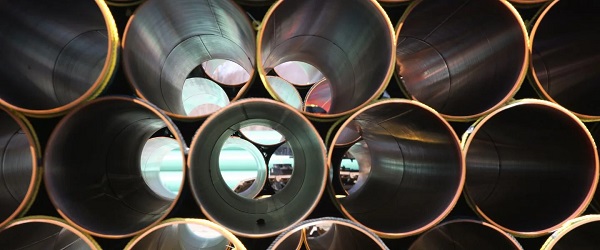
From the Fraser Institute
The latest war of words over a pipeline in Canada is between Alberta Premier Danielle Smith, who seeks the construction of a pipeline from Alberta’s oilsands to export facilities on the Pacific coast, and British Columbia Premier David Eby who is foursquare against it.
Smith argues the pipeline is needed to break the U.S. market-lock on Alberta oil, which the United States buys at a discount compared to world prices. Smith argues that increased trade in oil and gas—at higher prices—would be good for Alberta’s economy and Canada’s national economy, and can be done while protecting the environment in both provinces. Eby denies virtually all these claims.
More specifically, Premier Eby makes four arguments against a new pipeline, and all are incorrect.
First, he argues, any pipeline would pose unmitigated risks to B.C.’s coastal environment. But in reality, the data are clear—oil transport off Canada’s coasts is very safe (since the mid-1990s there has not been a single major spill from oil tankers or other vessels in Canadian waters). He also simultaneously argues that it’s pointless to build a new pipeline from Alberta because B.C.’s waters are protected by Bill C-48, the “tanker ban” bill enacted by the Trudeau government in 2017. But in fact, because Bill C-48 only applies to Canadian tankers, a regular stream of oil tankers and large fuel-capacity ships cruise up and down the B.C. coast (between Alaska and other U.S. ports) with stupendous safety records.
Second, Eby argues that B.C.’s First Nations oppose any such pipeline. But in reality, such opposition is quite contingent. The Trans Mountain pipeline expansion project (TMX), which has increased shipping capacity from Alberta to the west coast, has signed agreements with 81 Indigenous community groups (in both provinces) worth $657 million and produced more than $4.8 billion in contracts with Indigenous businesses.
Third, Eby claims that Smith’s proposal is not “real” because no private-sector companies have proposed to build the pipeline. And he’s partly right—no rational investor would look at the regulatory barricade facing pipeline construction and spend the time and money to propose a project. Those applications cost money and lots of it. In 2017, according to TC Energy,before it retracted its Energy East/Eastern proposals due largely to regulatory barriers, the company had spent more than C$1 billion trying to get permits. In a 2016 report, Enbridge listed pre-construction expenditures (which include crafting proposals) of up to US$1.5 billion to build its three proposed pipeline projects. These costs will not have gotten cheaper since then. But even so, the Alberta government’s pipeline proposal has the backing of an advisory group, which includes energy companies Enbridge, Trans Mountain and South Bow—likely because they want to invest in the project after there’s some assurance it will survive the regulatory blockade.
Finally, Eby’s claim that there’s no market demand for new pipelines (which implies there will be no investors) is unsubstantiated. According to S&P Global, Canadian oilsands production will reach a record annual average of 3.5 million barrels of oil per day (b/d) in 2025, five per cent higher than 2024. By 2030, production could top 3.9 million b/d, 500,000 b/d higher than 2024 (although this assumes the federal cap on emissions, imposed by the Trudeau government, does not curtail production as predicted). This profit potential will almost certainly attract investors, if they can overcome the regulatory blockade.
It’s fine, of course, for Premier Eby to look out for the people of B.C. as best he sees fit—that’s his job, after all. But it’s also his job to recognize the limits of his authority. When looking at the TMX project, the Supreme Court of Canada has already ruled that B.C. does not have the authority to block infrastructure of national importance, including pipelines.
But as the saying goes, you’re entitled to your own opinion but not entitled to your own facts. Premier Eby’s objections to another Alberta pipeline are rooted in fallacy, not fact. The Carney government should recognize this fact and decide whether or not another pipeline to B.C. waters is in the “national interest,” which is apparently how you get a permit to build major projects in Canada these days.
Energy
National media energy attacks: Bureau chiefs or three major Canadian newspapers woefully misinformed about pipelines
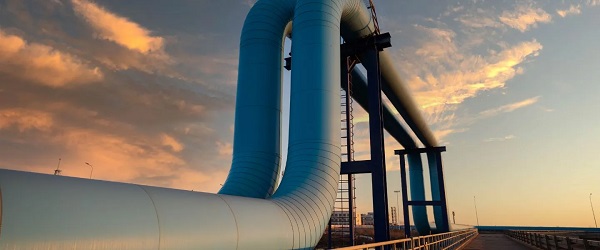
From the Fraser Institute
These three allegedly well informed national opinion-shapers are incredibly ignorant of national energy realities.
In a recent episode of CPAC PrimeTime Politics, three bureau chiefs from three major Canadian newspapers discussed the fracas between Alberta Premier Danielle Smith and Prime Minister Mark Carney. The Smith government plans to submit a proposal to Ottawa to build an oil pipeline from Alberta to British Columbia’s north coast. The episode underscored the profound disconnect between these major journalistic gatekeepers and the realities of energy policy in Canada.
First out of the gate, the Globe and Mail’s Robert Fife made the (false) argument that we already have the Trans Mountain pipeline expansion (TMX), which is only running at 70 per cent, so we don’t need additional pipelines. This variant of the “no market case” argument misunderstands both the economics of running pipelines and the reality of how much oilsands production can increase to supply foreign markets if—and only if—there’s a way to get it there.
In reality, since the TMX expansion entered service, about 80 per cent of the system’s capacity is reserved for long-term contracts by committed shippers, and the rest is available on a monthly basis for spot shippers who pay higher rates due largely to government-imposed costs of construction. From June 2024 to June 2025, committed capacity was fully utilized each month, averaging 99 per cent utilization. Simply put, TMX is essentially fully subscribed and flowing at a high percentage of its physical capacity.
And the idea that we don’t need additional capacity is also silly. According to S&P Global, Canadian oilsands production will reach a record annual average production of 3.5 million barrels per day (b/d), and by 2030 could top 3.9 million b/d (that’s 500,000 b/d higher than 2024). Without pipeline expansion, this growth may not happen. Alberta’s government, which is already coordinating with pipeline companies such as Enbridge, hopes to see oilsands production double in coming years.
Next, Mia Rabson, Ottawa deputy bureau chief of the Canadian Press, implied that Smith’s proposal is not viable because it comes from government, not the private sector. But Rabson neglected to say that it would be foolish for any company to prepare a very expensive project proposal in light of current massive regulatory legislative barriers (tanker ban off B.C. coast, oil and gas emission cap, etc.). Indeed, proposal costs can run into the billions.
Finally, Joel-Denis Bellavance, Ottawa bureau chief of La Presse, opined that a year ago “building a pipeline was not part of the national conversation.” Really? On what planet? How thick is the bubble around Quebec? Is it like bulletproof Perspex? This is a person helping shape Quebec opinion on pipelines in Western Canada, and if we take him at his word, he doesn’t know that pipelines and energy infrastructure have been on the agenda for quite some time now.
If these are the gatekeepers of Canadian news in central Canada, it’s no wonder that the citizenry seems so woefully uninformed about the need to build new pipelines, to move Alberta oil and gas to foreign markets beyond the United States, to strengthen Canada’s economy and to employ in many provinces people who don’t work in the media.
-

 Agriculture1 day ago
Agriculture1 day agoFrom Underdog to Top Broodmare
-

 City of Red Deer2 days ago
City of Red Deer2 days agoCindy Jefferies is Mayor. Tristin Brisbois, Cassandra Curtis, Jaelene Tweedle, and Adam Goodwin new Councillors – 2025 Red Deer General Election Results
-

 Bruce Dowbiggin2 days ago
Bruce Dowbiggin2 days agoIs The Latest Tiger Woods’ Injury Also A Death Knell For PGA Champions Golf?
-

 Alberta2 days ago
Alberta2 days agoAlberta’s licence plate vote is down to four
-
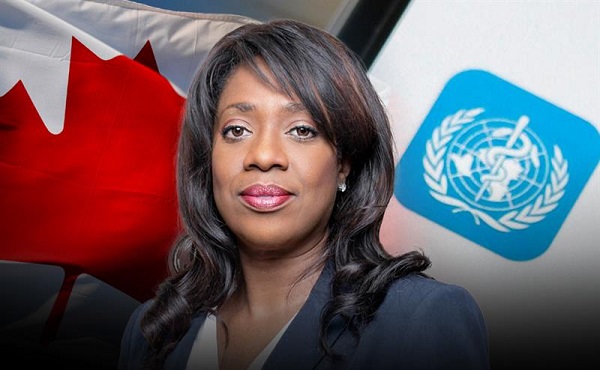
 Health1 day ago
Health1 day agoSovereignty at Stake: Why Parliament Must Review Treaties Before They’re Signed
-

 Business2 days ago
Business2 days ago“Modernization,” They Call It: How Ottawa Redefined Fraud as Progress
-

 Business1 day ago
Business1 day ago$15B and No Guarantees? Stellantis Deal explained by former Conservative Shadow Minister of Innovation, Science and Technology
-
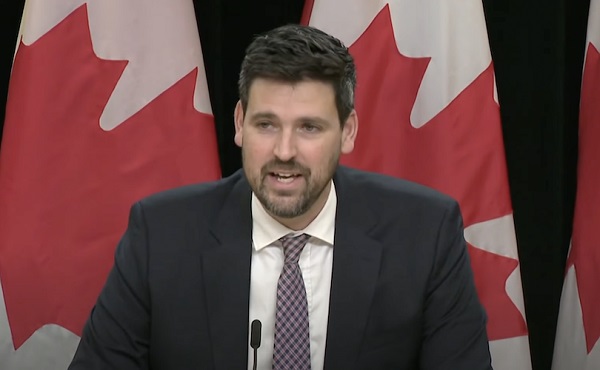
 Censorship Industrial Complex2 days ago
Censorship Industrial Complex2 days agoCanada’s justice minister confirms ‘hate crimes’ bill applies to online content







